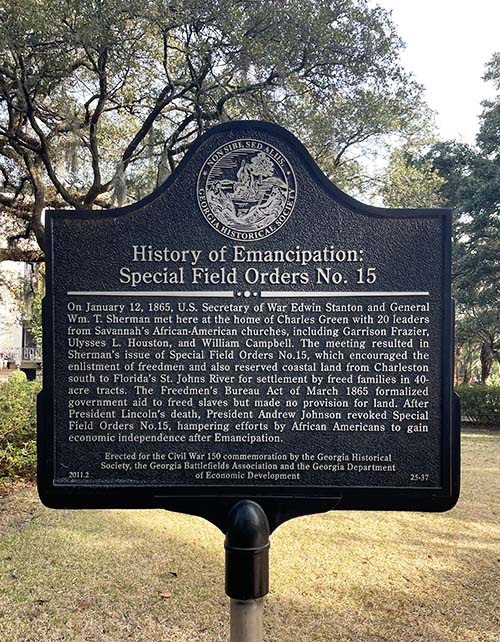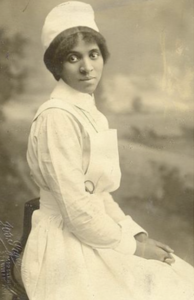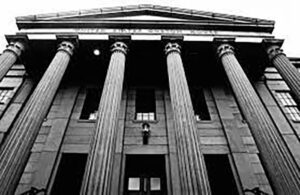Historical Figures


General Tecumseh Sherman

During the Christmas and New Year holidays of 1864-65, a reception was held in the house, hosted by Gen. Sherman and included his officers, Charles Green and a few prominent Savannahians. A Harper's Weekly print depicting the festivities is on display in the house.
On January 12, 1865, Gen. Sherman and Secty. of War Edwin Stanton met with twenty black community leaders of Savannah. They discussed land for the freed slaves. Subsequently Sherman issued Field Order #15 on January 16, 1865, setting aside confiscated and abandoned land along the SC, GA and northern FL coasts for the exclusive settlement of freed slaves. Each family would receive 40 acres of land and an army mule to work the land. The confiscated land became the jurisdiction of the Freedman's Bureau. After the war property disputes ensued and eventually President Johnson returned the land to its original owners.
Gen. Sherman left Savannah Feb. 1, 1865, crossed the Savannah River and resumed his destructive march through SC and NC.

Susie Baker King Taylor

Susie King Taylor was born into slavery on August 6, 1848 at the Grest Plantation in Liberty County, coastal Georgia. Her mother was a domestic servant. At age 7 Susie moved to Savannah to live with her grandmother, Dolly, who arranged for Susie to secretly attend school. By 1861 Susie's knowledge had surpassed that of her teachers.
At age 14 she escaped slavery when her uncle led her to a federal gunboat patrolling the waters off of fort Pulaski. From there she attached herself with First South Carolina Infantry.
Susie served for three years as a nurse in the regiment of former slaves, although she was officially enrolled as a laundress. She also taught children and adults to read and write. She is the only woman to write about her experiences serving in the Civil War.
In 1872 Susie went to work for Mrs. Charles Green (Aminta) as a laundress. She traveled with the Greens to Rye Branch for the summer and served as their cook.
She even won a prize at the fair for her excellent cooking. Later when Mrs. Green went to Europe, Susie went to Boston where she lived until 1912. She published her memoirs My Life in Camp ten years before her death.


He moved to Savannah in 1846 after winning a design competition for the Custom House on Bay Street. By 1850 he had become Savannah’s most important architect. His commissions included the Andrew Low House on Lafayette Square (1849), Massie School House (1855), Mercer-Williams House (1866), the Georgia Historic Society Library, the Chatham Artillery and Cockspur Island lighthouse.
Norris’ best-known house is the Green-Meldrim house (1853). The house is notable for its cast-iron porch and oriel windows. The interior features ornate plaster around the doors and windows and a dome above the spiral staircase. Norris used his knowledge of various architectural styles and his building skills to create a diverse collection of magnificent buildings in Savannah. He is undoubtably the most important architect in Savannah’s history.
